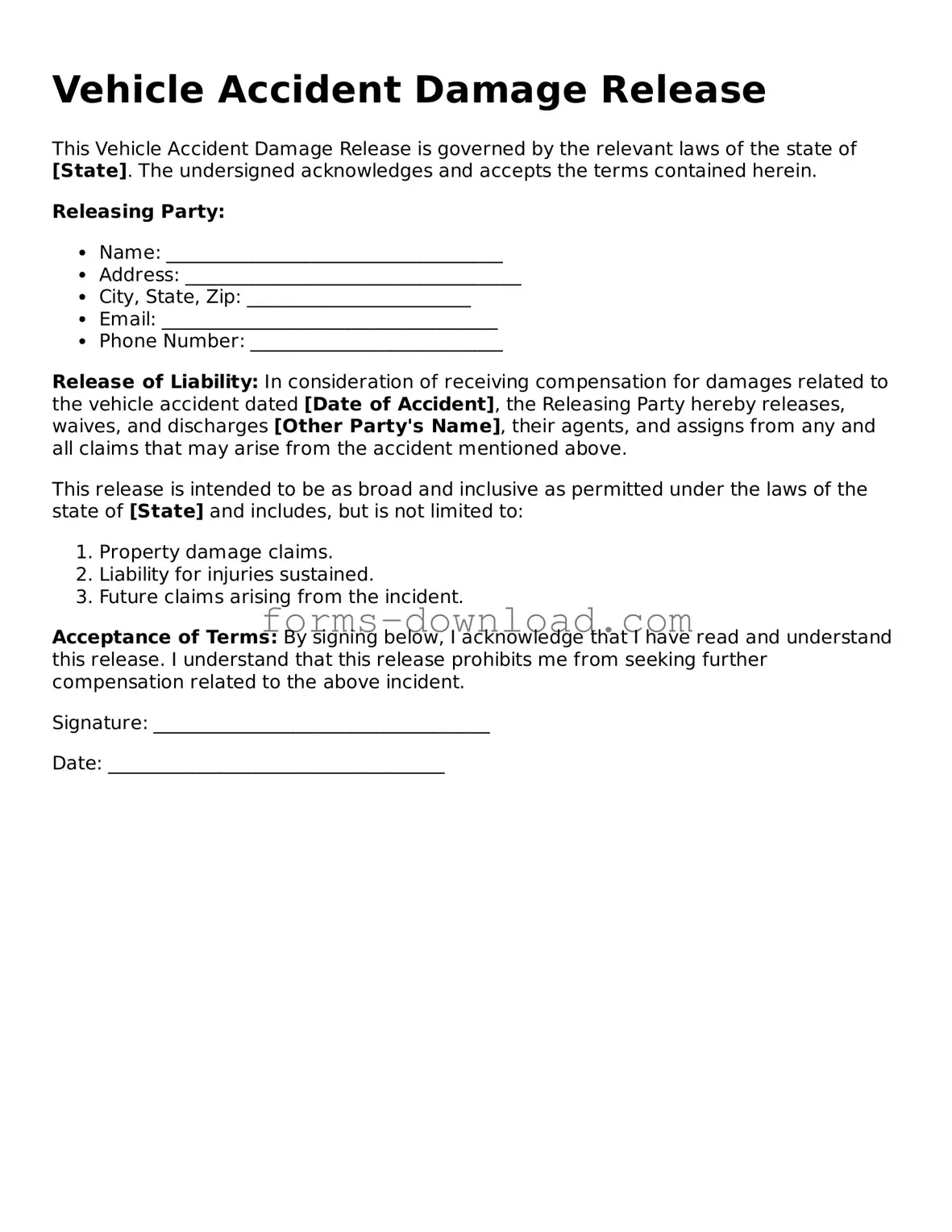Vehicle Accident Damage Release
This Vehicle Accident Damage Release is governed by the relevant laws of the state of [State]. The undersigned acknowledges and accepts the terms contained herein.
Releasing Party:
- Name: ____________________________________
- Address: ____________________________________
- City, State, Zip: ________________________
- Email: ____________________________________
- Phone Number: ___________________________
Release of Liability: In consideration of receiving compensation for damages related to the vehicle accident dated [Date of Accident], the Releasing Party hereby releases, waives, and discharges [Other Party's Name], their agents, and assigns from any and all claims that may arise from the accident mentioned above.
This release is intended to be as broad and inclusive as permitted under the laws of the state of [State] and includes, but is not limited to:
- Property damage claims.
- Liability for injuries sustained.
- Future claims arising from the incident.
Acceptance of Terms: By signing below, I acknowledge that I have read and understand this release. I understand that this release prohibits me from seeking further compensation related to the above incident.
Signature: ____________________________________
Date: ____________________________________
